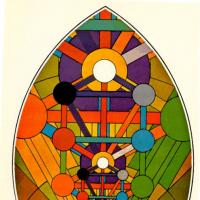Meddelelser: 14
Sprog: English
andogigi (Vise profilen) 11. maj 2010 19.38.10
It is well known that Claude Piron often spoke against importing European neologisms into Esperanto and in favor of using current Esperanto roots to create new words. If Esperanto (and likewise Esperantists) were not open to change in the language, why would he have felt the need to issue such a warning?
tommjames (Vise profilen) 11. maj 2010 20.01.41
Huaskar (Vise profilen) 11. maj 2010 20.02.14
jan aleksan:Actually you can guess meaning and prononciation of chinese signs(at least if this signs are used for the chinese lenguage, in Japan signs are often read japanese,kun-yomi )utku:It's far from being so simple. Jes, ideograms are compounds of more simple ideograms (except those particular simple elements). But it doesn't work like Korean. When, as a learner, you find a new ideogram: you cannot pronounce it, and you cannot guess the meaning.jan aleksan: Where did you read that? I don't know the chinese, the only thing I know is that Chinese have more or less 50000 ideogrammes. Does it mean 50000 root words?Kenneth Searight, an old non-esperantist colanger, wrote it. Also I don't know Chinese. So, that claim may not be true. But even if there are 50000 ideogrammes, I think most of them simply compounds of more basic ideograms. (kunmetitaj vortoj)
At least you can guess to what notion it belongs to (example the ideograms of lake, sea, ocean, water, etc has the same element).
Maybe the answer provided by Bertil here
is a good explaination of this 2nd paradox.
The reason: One part of a sign often resembles the category of the word, for instance: associated to water, men, birds...
the other part shows the approximated sound of the word.
Exampel: The sign for horse is a pictograph. prononced Ma, falling-ascending tone
The word for dragonfly is pronounced Ma, high tone.
The sign for dragonfly consists of to components:
the horse-sign for approximation of the sound, the sign for insect to approximate the meaning.
For the interrogative particle Ma , ascending tone (comparable to cxu) the horse-sign is combined with the mouth-symbol, representing speach.
........
Often the phonetic element resembles even the exact prononciation, inclusively tone.
Regarding the thesis of esperanto having more root-words than chinese:
I'm no expert for this lenguages but chinese seems to have an immense amount of root-words, far more than esperanto or even english. For example chinese has at least two roots for swimming, which are combined for this word(in order of avoiding homonyms due to the small amount of syllabies in chinese)
However, esperanto still has many roots,although less than most lenguages, which take some time to learn.
ceigered (Vise profilen) 12. maj 2010 05.24.54
inhahe:]ceigered:But if the implication is that Eo doesn't change as much as other languages change (or other languages of comparable or even greater numbers of speakers), then there must be a reason for that. I think the key is here: "daughter language/dialect" -- in that particularly in Eo, a dialect *is* a daughter language, simply because Esperanto is used a lot more online in proportion to speaking in person than other languages, or if not that, then because relatively few Esperantists are native speakers.. native speakers learn from their parents; secondary speakers learn from canonical sources. So it may have a million speakers, but they're not a million people with any particular geographical relationship to each other -- they're just people in the world who use the internet (or read books). Whereas in other languages, "dialects" can remain specific to region (which is pretty much the whole point/meaning of a "dialect"). So in Eo, by contrast, a lot more people have to "won over" simply because there is no mechanism for grouping such as proximity or lineage -- unless, of course, you count the hypothetical possibility of "daughter languages" per se.utku:"Esperanto tries to change the whole world, but it is extremely closed to the changes on itself." (Even to the possible future necessary reforms by Akademio.)To delve on the complexity of this paradox, the biggest problem that any change would have is acceptance. As we've seen with English spelling reforms, they don't go down well now that we have books printed everyday, and people no longer have to rely on whatever their parents or village elders said for their daily dose of "correct" grammar. Esperanto's a step further - the entire language was basically created in a controlled environment, where the language's grammar, sounds and writing style were all pretty much set in stone (English on the other hand was born out of sheer convenience).
So it's not so much a law made by people, but more just the way things work - Esperanto is resistant to change because many won't bother learning something new unless it slowly becomes popular style or is more attractive. Until either condition is met, any attempt to change the language will really just create another "daughter language/dialect". The reason why Esperanto doesn't change is not because it was made unchangeable, but because it now is almost unchangeable due to the large size of the speaker group that has to be won over.
i'm not much of an expert on Esperanto, so my presumptions could be wrong. Just sharing my two bits.
That's a lot of good points - everyone's learning "2nd hand" so to say, so there's little room for the language to evolve rapidly when everyone's got the rules of grammar recently stuck in their heads.
I think things will change a lot more thought the larger Esperanto's speaker group gets (if it does) and the more native speakers there are - then we will see a proper transition from people learning the language from the same grammars etc to people learning the language from people born speaking it (not saying that's better or worse, but people do tend to like learning languages off of a native speaker). Even though, as Erinja said, Esperanto techinically is a living language, it's still a bit of a cyborg - part is living, that is, it is being used, taught to new speakers, etc, but a large part of it is still artificial, because at the moment Esperanto is still acting a bit like a prosthesis - not part of a newborn (except in maybe a 1000 people or so), but rather added on later in life.



